Liverpool: there is so much to discover in this outer Sydney suburb
A Self-Guided Walk in Liverpool, Sydney
Liverpool is a long way out. The distance puts people off. I have worked in Liverpool and often visited a friend who lived here but have never really explored the suburb. Today I’ll find out what more there is to Liverpool than work and a friendship.

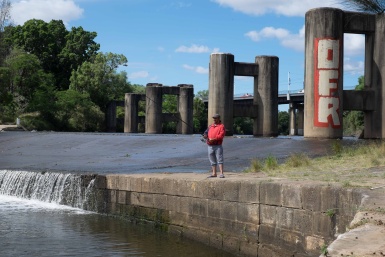
Railway Station
The 1880s Victorian Italianate style station building is one of only two remaining stations of this style remaining in NSW. Over the road, a large advertising banner hangs from the decorative cast iron frieze panels on the balcony of the heritage listed New Commercial Hotel. The weir I have read about is easily visible from the station stairs.
Liverpool Weir
A flight of stairs leads to a bridge straddling the railway tracks and hopefully to the weir. The steps are strewn with rubbish and dead leaves. Old clothing has been left on the ground and a shopping trolley pushed down the stairs. Yet again outside of my comfort zone, I continue on.
A walking track leads past the children’s playground to the weir where I carefully step down an unmade path and introduce myself to a fisherman. He is from Iraq and has almost no English but smiles when he realises that I know about the Sabean Mandaean minority group he belongs to.


Liverpool’s Multiculturalism
In less than an hour I have passed women in saris, heard Arabic in the street, greeted others from Africa and noted the occasional Anglo Australian. Liverpool seems to epitomise multicultural Australia.
The “Street University” where my friend’s children used to hang out promotes community and inclusion. Heritage listed Del Rosa is for sale. A multi lingual sign in welcomes me to the Living Garden, where mosaic decorates the paving and concrete benches provide seating for quiet contemplation in a suburb whose density is rapidly increasing.

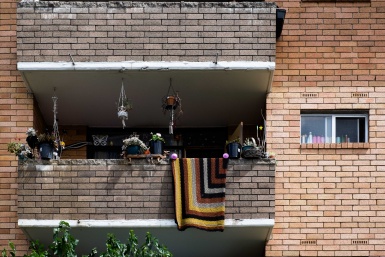
Low rise unit blocks built in the 60s dominate Speed Street and new high-rise blocks are being built. A couple of workers cottages are overshadowed by unit blocks. Rosebank, a two-storey Gentleman’s residence designed by the son of Henry Parkes is set back from the road. While an Indian woman, her friend and I have no common language, we still manage to communicate and depart with the traditional ‘namaste’.
Noise from a new high-rise development drowns out heavy traffic noise from the six lane Hume highway. Trucks and cars race past the site of the 1880’s Collingwood Hotel which after 1930s renovations has the appearance of a Tudor mansion.
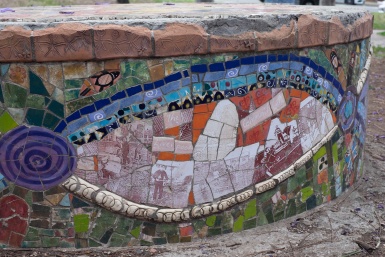

The First Free Town
Liverpool was the first free town established in Australia. The Liverpool Regional Museum exhibition displays artefacts reminiscent of earlier times and visitors can hear interesting local oral histories. The letter from a German held in the Holsworthy Internment Camp and a copy of the Factories and Shops Act from 1922 make a fascinating read. The current local Historical Society exhibition concerns the impact of the smartphone displaying everything from Aboriginal message sticks to the ubiquitous mobile phone.
Tours of Collingwood House (across parkland from the museum) are by appointment only and I peer at it over the fence. The house is one of the few remaining from the Macquarie period.
Urban Centre
I walk back to the urban centre through parkland. It is a pleasure to be in the open air. Three workers in fluoro vests each sit under a tree having their lunch in Discovery Park (corner of Charles and Atkinson Streets) which was once home to the oldest known monument to Captain Cook, Cook’s Obelisk. It is no longer there.
The few remaining workers cottages in Charles Street are unlikely to survive. Two have been sold and the area is zoned for high density development.


In Macquarie Street, the Shisha cafes will open later. The large roomy restaurants offer differing cuisines – Lebanese, Thai and Indian. Hamoud 1 is a smaller eatery and serves homos, foule, fatteh and falafel.
Plates of cellophane wrapped baklawa and line the counter of Ablas Patisserie. If you prefer your shisha at home, the Lebanese supermarket has a shelf of shisha pipes. The date filled biscuits from the Iraqi bakery are tempting.


Shops sell fashionable women’s clothing with long hemlines, long sleeves head coverings. Colourful saris with intricate gold braid and embroidery adorn shop windows. At a busy café in the mall, customers chat in a range of languages.
Once seated, I realise I am the only woman amongst about 30 men. Perhaps because I am sitting outside, it seems as if the smoking rate here is higher than in other suburbs. That’s ironic as my work here years ago was in the area of Tobacco Control. Menu items at the Balkan Cafe are in another language (maybe Croatian).
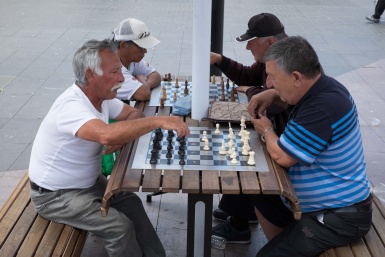
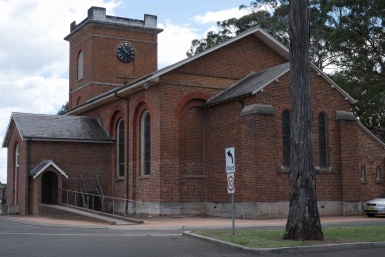
Udaya Spices
Udaya Spices is an enormous shop catering to the Indian community. A spicy aroma and Indian music greets me. Numbered rows offer a huge range of Indian groceries. Enormous barrels of oil stand side by side on the floor. Amongst the selection of pots and pans is one enormous pot of at least one metre across.
The frozen food section rivals that at my local supermarket, but all the products are Indian. A woman picks out a few long thin sticks of a fresh green vegetable. She tells me it is called “drum sticks”, is good with dahl and is rich in iron.
Back in the mall jewellers display gold necklaces and ornaments. Groups of men play chess and dominoes at communal tables. One tells me that dominoes is popular in Iraq. As they play I realise that the rules are more complicated than the dominoes I know.


Nearby St Luke’s is the oldest Anglican church in Sydney. It’s clock in dates from the Macquarie era. The Middle Eastern supermarket is stocked with goodies including tamarind, spices, yoghurt, cheeses and honey. The cashew nuts are cheaper than in my suburb. I buy some for the trip home.
Liverpool’s Original Inhabitants
There is more than one Halal butcher and the Gandangarra Aboriginal Land Council has its offices here. The original inhabitants of the land that Liverpool is built on have not been forgotten. On brick paving outside the large shopping centre, engravings with dreamtime and reconciliation references are worth a second look.


In Apex Park, signs explain how the park was once the first cemetery in Liverpool. A well-dressed man starts talking to me. He is surprised that I know where his country (Biafra) is. I mention a book that introduced me to history of the area “Half of a yellow sun” which he says is banned in Nigeria. He has a train to catch and we bid each other farewell, both the richer for our encounter.
The building now used by Liverpool TAFE was once the first Liverpool Hospital and was later used as an asylum for old and infirm men. Old photos hang in the foyer of the ground floor. They illustrate what life was like for the staff, patients and men who lived here.


Bigge Park
Opposite the TAFE is Bigge Park. The water play area is popular and I find the new home for Cooks Obelisk that was moved from Discovery Park. It has been restored and now stands tall in a prominent place in the park. The war memorial is here as is a clock tower erected by Rotary. The park provides much needed outdoor space for those who live in the apartments that surround the suburb.
I have had fun exploring a suburb that I’ve been to many times before and yet I really didn’t know it at all. It is certainly worth a visit.
Useful information:
Liverpool is 27km South West of the Sydney CBD
Plan your trip at transportnsw.info
Walking Map
And a map to assist you: (You can download it here).
(NOTE that the time indicated on the map does not allow for any stops. I take an average of 4-5 hours when I explore):


Jo – I continue to enjoy your regular posts. I imagine one day I’ll be be more organised and plan to follow in your well worn tracks, but for now I’m happy to continue to take in your posts over a cuppa. I get a great sense from your writings and photographs of my adopted city. Thank you. jD
Thanks JD. Maybe we can get a small group together for an excursion one day. Jo
Nice Liverpool Blog Joanne. Thanks for coming out and catching up with some of Liverpool’s 101
Thank you Glen. I enjoyed my day exploring Liverpool.
Hey Joanne. What a great post, you clearly have seen Liverpool for what it is. I just wanted to let you know that massive changes are coming to the area. If you visit again in the next few years you will notice the town will be turned into a city… Sydney’s third CBD.
You mentioned in your article the two plots have been rezoned for high density. Now, 250,000sqm of land has been rezoned in the CBD from commercial to mixed-use meaning there will be a lot more development & many more people living in the city.
Here is an article I wrote which will give you a great about what is happening in the area over the next 5-10 years: https://www.buildsydney.com/liverpool-rezoned-sydney-third-cbd/
Would love to hear your thoughts & how you think it may impact the area, kind regards.
Thank you for taking the time to read my Liverpool discovery. I’ll take a look at your article too. Interestingly when I walked through Penrith I heard rumours about either Liverpool or Penrith being the 3rd CBD. Liverpool certainly had changed since I worked at the hospital there many years ago now.
How things have changed!
Born in 1943 and growing up in post-war Liverpool (Moorebank really) seemed ideal for a young boy. Swimming at the weir (on the fresh water side because there were sharks on the other side), jumping off the old railway bridge, putting pennies on the railway line to the Anzac Rifle Range to be run over by the puffing steam train, swimming in Clinch’s Pond (I wonder if it really was bottomless?).
I don’t know that I’d like to go back there now, as all of those memories are just that – memories of a time long gone.
Thank you so much for sharing your memories – it sounds like a fun childhood with plenty of freedom and open spaces to explore.